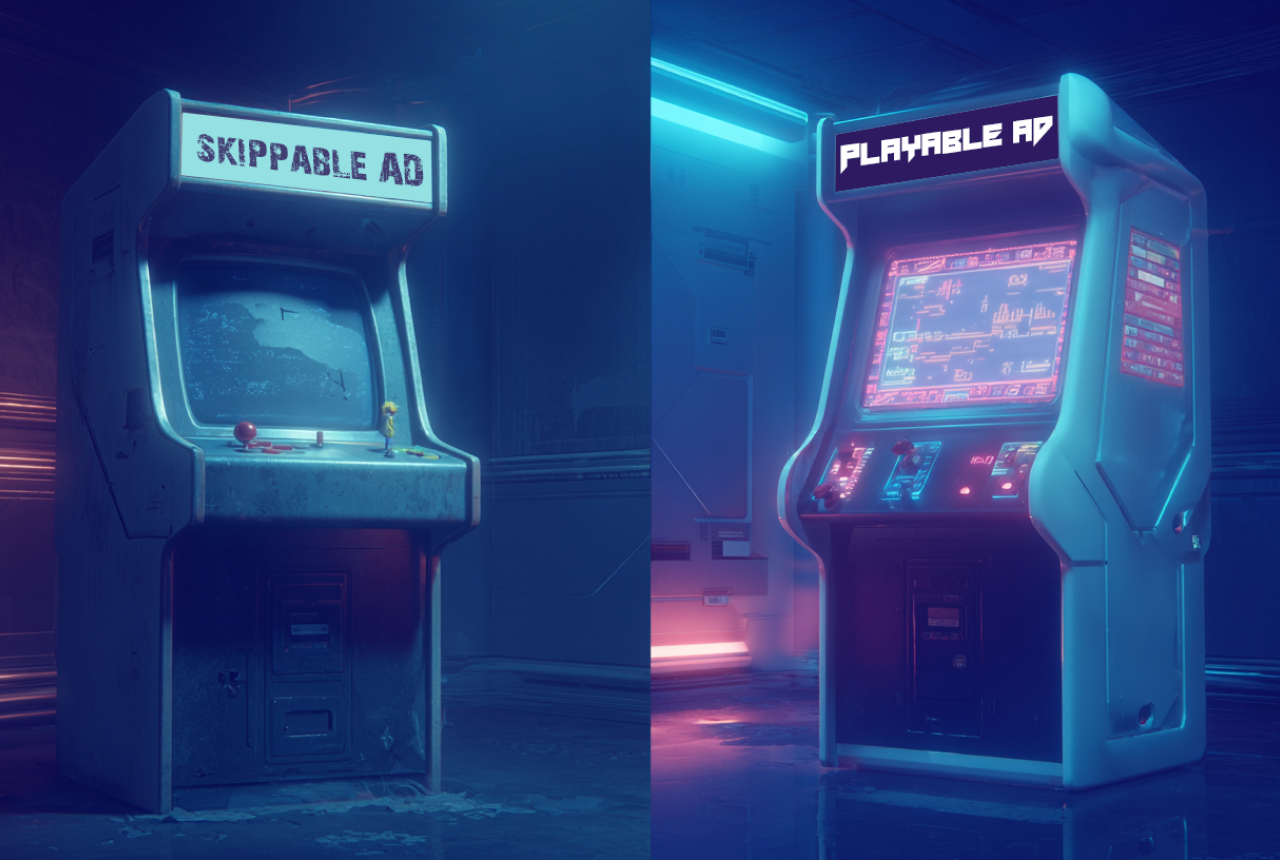In-Game Advertising
From Skippable to Playable: What Works Creatively in Gaming Ads (and What doesn’t)

The latest Deloitte × Google AdMob study lands a sobering headline for anyone still treating mobile ads as disposable wallpaper: heavy gamers are up to three times more likely to extend a session and make an in-app purchase after a “high-quality” ad experience.
Conversely, a single exposure to a disruptive format can increase churn by 6-7%, and poorly designed playables double the risk that a player will quit altogether.
As mobile gaming cements itself as the world’s favourite screen-based pastime, getting creative right is no longer optional; it is the growth lever. Here’s our guide to getting your ad experiences over the “high quality” line.
From clicks to connection
Let’s put the numbers in context: traditional banner CTRs hover below 0.03%, whereas a well-built playable benchmarks at about 3% engagement. This matters because engagement happens inside the experience - not on an end-card - and signals a far richer brand interaction than a solitary click.
This insight aligns with broader industry data showing gaming environments deliver 10× more attention than web video, and 98% viewability. In other words, the real upside lies in harnessing attention already present, not forcing new behaviour.
Three canvases, one objective: respect the player
The three building blocks of any strategy are “in-game”, “around-game”, and “away-from-game” placements, as defined by the IAB. Understanding which canvas you are painting on shapes every creative decision that follows.
In-game executions resemble the billboard on a FIFA touch-line; non-clickable, context-perfect branding that takes zero attention away from play. Meanwhile, around-game inventory (rewarded videos, interstitials and playables) appears between levels and is fully measurable. Lastly, away-from-game is a classic display or video on gaming news sites.
What works best?
Seamless scenery: When a poster, pitch-side hoarding or branded vehicle is textured directly into the 3D world, players register it subconsciously. The result is deeper brand recall without the irritation of a pop-up.
Value-exchange video: Around-game rewarded spots (15- to 30-second, full-screen clips that unlock the next level or extra tokens) continue to win favour because they respect the give-and-get contract players expect. Completion rates are transparent, so media buyers can optimise quickly.
Playable ads engineered for speed: Lightweight micro-games that ask a user to tap, swipe or drag, and give instant audiovisual feedback. Successful playables follow four simple rules:
- Keep the core mechanic intuitive within five seconds
- Limit play to 15-30 seconds
- Mirror the parent game’s genre (e.g. racing ad for an automotive brand)
- End with a frictionless CTA (e.g. “Unlock the full story” instead of a hard sell)
Branded mini-games that live outside ad slots: Unlike playables, these HTML5 titles sit on a standalone URL or QR-code landing page. They can stretch up to 10 minutes in length, weaving in leaderboards, coupons, and share-to-win loops. They’re also perfect when the brief is deep brand storytelling rather than short-term sales.
Immersive worlds and avatars: Longer-running activations inside Roblox or Fortnite (think virtual merch or branded environments) reward brands willing to invest in persistent presence over one-off bursts.
Smart social hooks: Features such as leaderboards, badges and shareable highlights turn a solitary task into a “beat-your-friend” challenge, driving organic reach for free.
And what doesn’t work?
Complexity: Tutorials, multi-step controls or delayed instructions cause instant drop-off. The ad’s first five seconds should feel like muscle memory.
Front-loaded branding: Long intro cards soak up precious attention; modern players decide in under two seconds whether to stay or skip.
Static banners disguised as games: A “playable” that never reacts to user input feels like a broken banner and tends to be punished accordingly.
Text walls: Gamers skim visuals, so copy-heavy screens undermine hard-won momentum.
Disruptive design tricks. For example, the Deloitte x AdMob research singles out fake close buttons, forced redirects, and misleading interactivity as retention killers. Short-term lifts in clicks are wiped out by long-term churn.
Hidden incentives and dead ends: If the reward is unclear, or the experience ends without a next step, attention evaporates.
The future gaming: high quality, high scores
Formats are converging. We expect standardisation to make even in-game billboards partially interactive in the near future, giving brands measurement without compromising immersion. Meanwhile, the Deloitte findings suggest that quality, respectful, design is in itself a retention mechanic. The creative brief, then, can be summarised in three simple takeaways:
- Meet players where they are - pick the right canvas.
- Add value or add nothing - blend, reward or entertain.
- Measure what matters - treat mid-experience engagement as the new north star.
Brands that follow those principles will turn gaming’s unparalleled attention into sustainable business outcomes. Those that ignore them will, quite literally, be skipped.








.webp)















